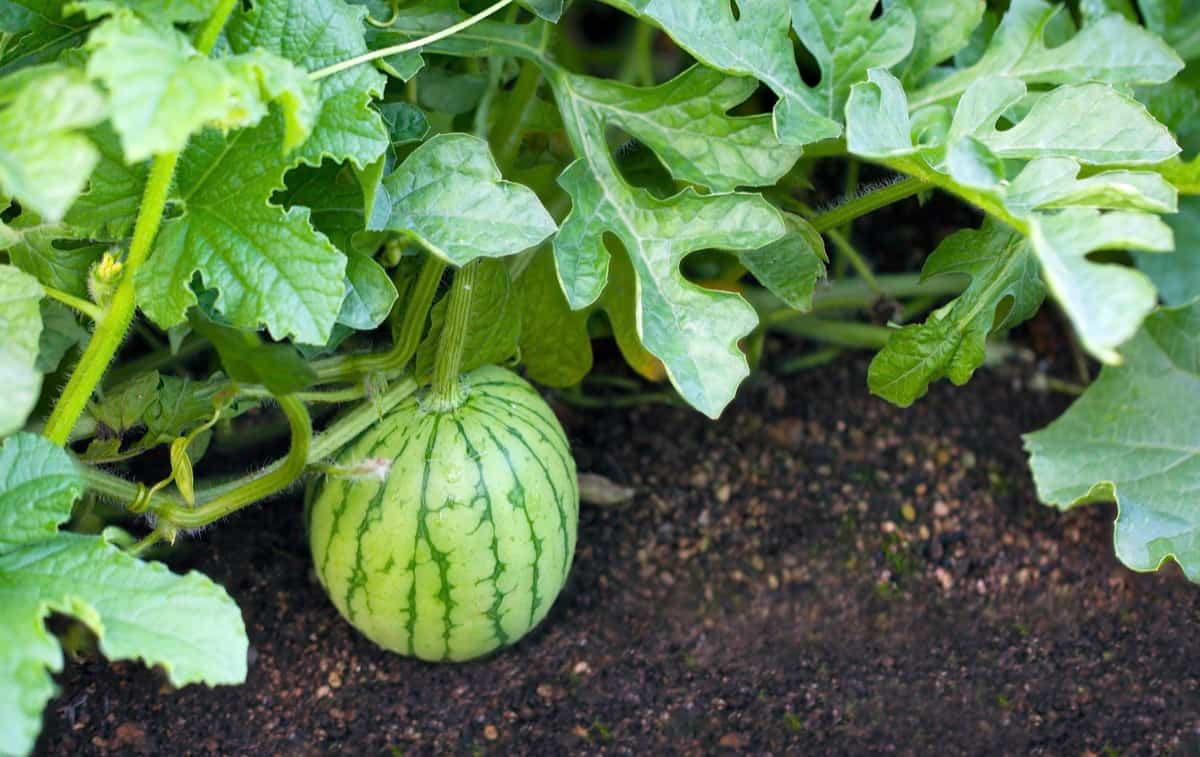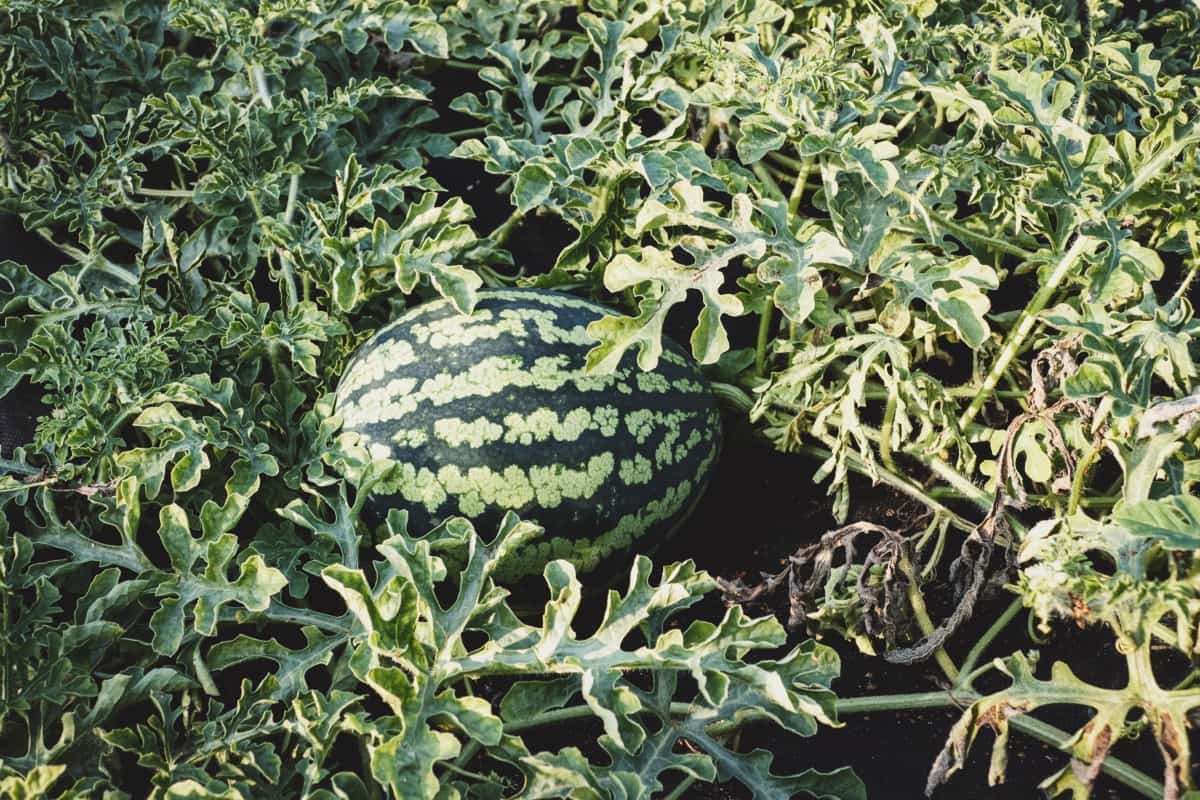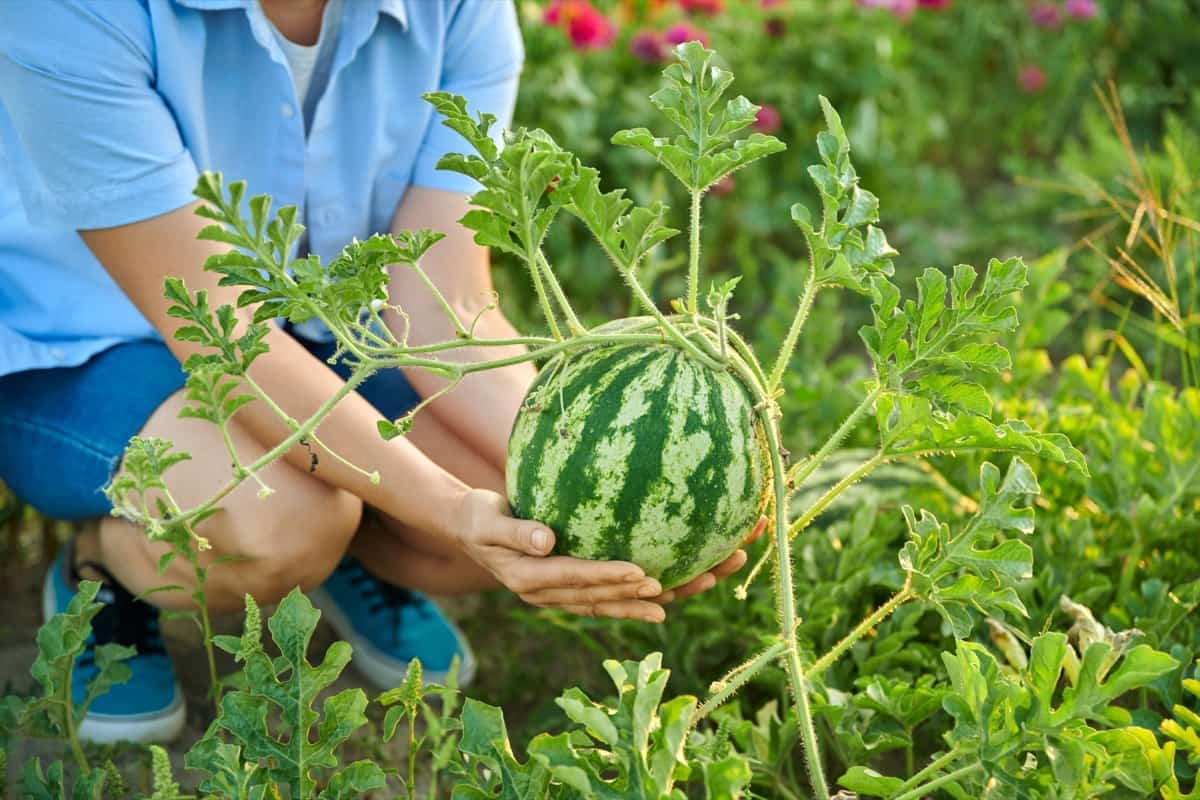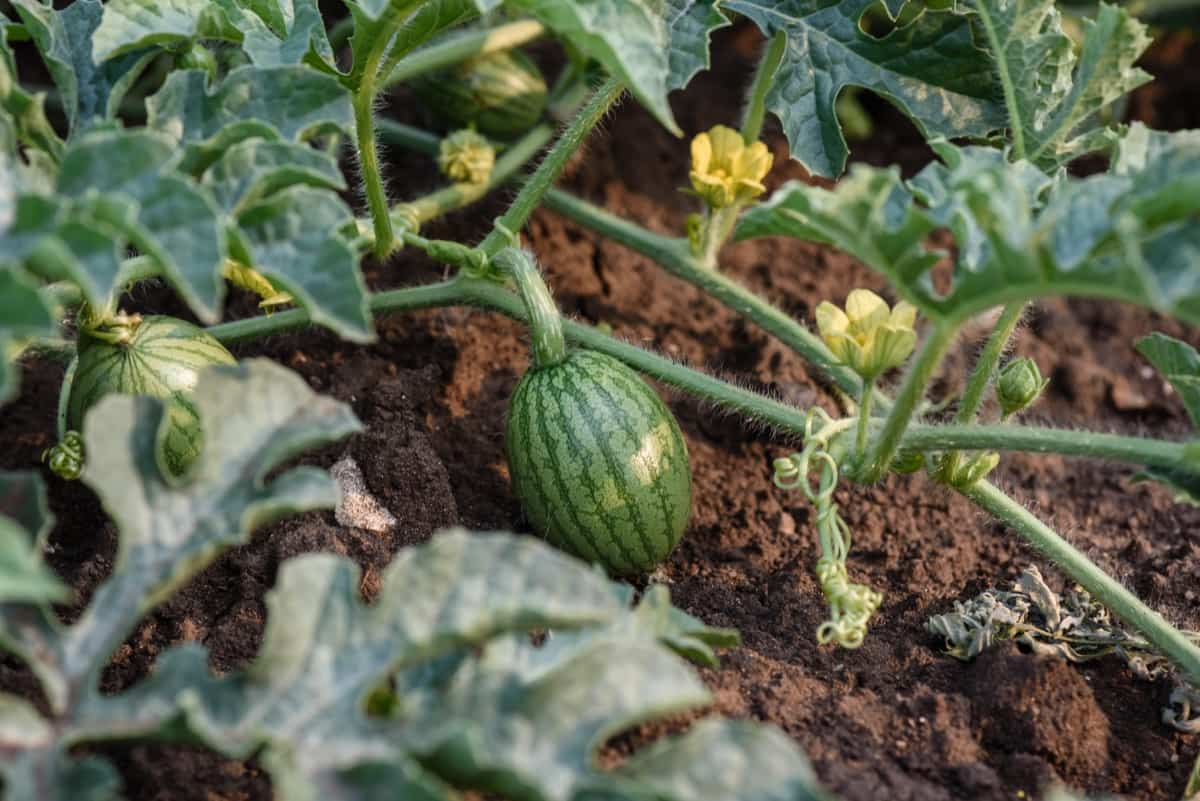Companion planting, an age-old gardening practice, taps into the mutual benefits that certain plant species offer each other when grown nearby. This technique harnesses the power of biodiversity, enhancing growth, yield, and flavor while naturally controlling pests, diseases, and weeds.

Watermelons, summertime favorites, are no exception to the benefits derived from companion planting. This guide aims to provide detailed insights into the world of watermelon companion planting. It will explore the best companion plants for watermelons, their benefits, and detrimental pairings to avoid, thereby aiding in creating a thriving, productive watermelon garden.
Companion Plants for Watermelon: Enhancing Growth and Yield
Gardening brings countless ways to boost crop growth and yield. One such method is the ancient art of companion planting, a time-tested practice used for centuries by gardeners around the world. In this practice, certain plants grown near benefit one another. Watermelon Companion Planting is a shining example of this practice. By selecting the right companion plants for watermelon, the growth and yield of these delicious, juicy fruits can be significantly enhanced.
The Benefits of Companion Planting With Watermelon
Companion planting with watermelon offers multiple benefits, from improved growth and yield to pest and disease control. The practice also contributes to biodiversity, enriching the garden’s ecosystem. The Best Companion Plants for Watermelon offer specific benefits like deterring pests that could otherwise damage the crop, improving soil health, and even enhancing the flavor of the watermelons.
These benefits, however, are contingent on selecting the right plants. Therefore, understanding what you should not plant next to watermelon is equally important, as bad companion plants for watermelon can hinder growth and lower crop yield.
Creating a Thriving Watermelon Garden: Companion Planting Guide
To create a thriving watermelon garden, understanding the principles of watermelon companion planting is crucial. Let’s start by identifying some of the best companion plants for watermelon. These include beans, corn, marigold, nasturtium, and oregano. Beans help fix nitrogen in the soil, thus providing nutrients to the watermelons.
Corn is a natural trellis for watermelon vines to grow, and marigolds and nasturtiums deter pests like beetles and aphids. Watermelon companion herbs like oregano also repel pests while attracting beneficial insects. Conversely, bad companion plants for watermelons, like potatoes and pumpkins, can attract pests or compete for resources, hindering the growth of watermelons.
In case you missed it: How to Pollinate Watermelon: Hand Pollination, Natural Pollination Methods, and Tips

Companion Plants to Deter Pests in Watermelon Gardens
Companion plants can play an instrumental role in pest control. Certain plants emit strong scents or produce chemicals that deter pests, providing a natural, chemical-free alternative to pesticides. Marigold and nasturtium, as already mentioned, are known for their pest-repelling properties. Garlic and chives are excellent watermelon companion plants for deterring pests, as their strong scent confuses and deters them from infesting the garden.
Improving Soil Health with Watermelon Companion Plants
Companion planting can also play a vital role in improving soil health. Beans, as legumes, form a symbiotic bond with bacteria to extract nitrogen from the atmosphere and enrich the soil. This process enriches the soil, providing essential nutrients for watermelons and other plants. Radishes also make good companions; their deep roots help break up the soil, improving its structure and water retention capabilities.
Companion Planting Strategies for Maximizing Watermelon Production
Strategically selecting companion plants can maximize watermelon production. Fast-growing crops like radishes can be sown with watermelons. Radishes mature quickly, leaving ample space for watermelons to grow later in the season. Similarly, using corn as a natural trellis for watermelon vines allows efficient use of space, leaving more area for other crops or additional watermelon plants. Furthermore, using plants with pest-repelling properties like marigolds, nasturtium, and certain watermelon companion herbs can reduce crop damage and thus enhance overall production.
Attracting Beneficial Insects Through Companion Planting
Companion planting is not only about deterring pests but also about attracting beneficial insects. Certain plants attract insects that prey on common pests or aid in pollination, which is crucial for fruit production. Dill, fennel, and coriander attract beneficial insects like ladybugs and lacewings that eat aphids, a common pest. Likewise, flowering plants like lavender and calendula attract pollinators like bees and butterflies, thus aiding in the pollination of watermelon flowers.
Companion Plants for Watermelon: Natural Weed Control Methods
Some companion plants can serve as natural weed controllers. Rapidly growing plants cover the ground, reducing sunlight and stopping weed growth. Crops like buckwheat and clover can be grown alongside watermelons for this purpose. They grow quickly, forming a living mulch that inhibits weed growth. Furthermore, when these plants decompose, they enrich the soil, benefiting the watermelon plants.
In case you missed it: 1-Acre Watermelon Farming Cost and Profit Analysis: Cultivation Economics and Production Project Report

Companion Planting for Disease Prevention in Watermelon Crops
Companion planting can also contribute to disease prevention. Certain plants have properties that help suppress or deter diseases that could otherwise devastate a watermelon crop. For example, the strong scent of alliums like onions and garlic can deter pests that carry diseases. Marigold roots emit a substance that can kill nematodes, tiny worms that can damage roots and stunt watermelon growth. Furthermore, crop rotation, a form of companion planting over time, can prevent the build-up of disease-causing organisms in the soil.
Enhancing the Flavor of Watermelons Through Companion Planting
In addition to boosting yield and improving pest control, companion planting can even enhance the flavor of watermelons. When planted near watermelons, certain herbs can subtly alter the flavor of the fruits, making them even more delicious. Basil, for instance, is believed to enhance the sweetness of watermelons. Likewise, borage can add a refreshing cucumber-like flavor to the fruits. Therefore, using watermelon companion herbs in your garden can offer additional taste benefits.
Watermelon Companion Plants
- Good Companion Plants for Watermelon: Beans, Corn, Marigold, Calendula, Buckwheat, Clover, Onions, Basil, Borage, Fennel, Coriander, Lavender, Garlic, Chives, Radishes, Dill, Marigold, Nasturtium, Oregano
- Bad Companion Plants for Watermelon: Potatoes, Pumpkins
Conclusion
Watermelon companion planting is a beneficial practice that can significantly increase yield, improve flavor, control pests, and prevent diseases. By following the recommendations outlined in this guide, gardeners can reap the rewards of this time-honored practice. The watermelon companion planting chart offers a quick reference to ensure the best use of space in your garden and the health of your watermelon crop.
In case you missed it: 9 Causes of Dying Watermelon Plants and How to Fix Them

Companion planting is a step towards sustainable, organic gardening by fostering biodiversity, enriching the soil, and encouraging natural pest control. However, the practice requires careful planning and knowing which plants make the best and worst companions for your watermelons. Thus, understanding the principles of watermelon companion planting is crucial to creating a healthy, bountiful garden.
- Feed Your Flock for Less: Top 10 Tips to Save on Chicken Feed
- Ultimate Guide to Ossabaw Island Hog: Breeding, Raising, Diet, and Care
- Hatching Answers: The Top 10 Reasons Your Chickens Aren’t Laying Eggs
- Eggs and Economics: Breaking Down the Cost of Raising Backyard Chickens
- Defend Your Greens: Proven Methods to Keep Iguanas Out of Your Garden
- Ultimate Guide to Cinnamon Queen Chicken: A Comprehensive Guide for Beginners
- Ultimate Guide to California Tan Chicken: Breeding, Raising, Diet, Egg-Production and Care
- Ultimate Guide to Marsh Daisy Chicken: Breeding, Raising, Diet, and Care
- 10 Types of Chicken Farming Businesses You Can Start for Profits